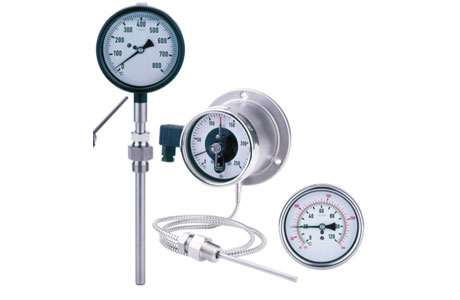What Are The Applications Of A Temperature Switch?
Key Takeaway
Temperature switches are vital in automotive systems, industrial equipment, and power plants. They prevent overheating and ensure system efficiency.
They are also used in medical devices, food processing, and HVAC systems, offering versatile applications across industries.
Introduction to Temperature Switch Applications
Temperature switches are essential components in many systems, offering automatic temperature regulation to ensure operational safety and efficiency. Their role in temperature-sensitive processes cannot be overstated. These devices are designed to activate or deactivate machinery or systems once a preset temperature threshold is reached, making them critical for maintaining safe operating conditions across numerous industries.
The versatility of temperature switches means they can be found in various applications, ranging from industrial plants and energy production facilities to domestic appliances and automotive systems. They help prevent overheating, control temperature fluctuations, and safeguard valuable equipment and processes. By understanding the specific applications of temperature switches, industries can make informed decisions about their integration, ensuring greater safety, energy efficiency, and operational reliability.

Role in Safety Systems
One of the most crucial applications of temperature switches is in safety systems. Temperature regulation is vital in preventing hazardous situations such as overheating, fires, or equipment failure. In safety-critical environments like chemical plants, nuclear facilities, and automotive engines, temperature switches play a vital role in ensuring that systems remain within safe temperature ranges.
For instance, in industrial safety systems, temperature switches are used to monitor the temperature of reactors, boilers, and pressure vessels. When the temperature exceeds a dangerous level, the temperature switch activates an alarm, shutdown process, or cooling system, averting potential disasters. Similarly, in automotive engines, temperature switches monitor engine temperature to prevent overheating, ensuring that the engine remains within the optimal temperature range and avoids thermal damage.
The role of temperature switches in safety systems is crucial in industries where equipment failure or temperature extremes could lead to significant damage, financial loss, or risk to human life.
Applications in Energy and Power Industries
In the energy and power industries, temperature switches are used extensively to regulate temperatures in machinery and systems. Power plants, including those that generate electricity through coal, natural gas, and renewable resources, rely on temperature switches to maintain efficient operation and prevent overheating of essential components.
For example, in power generation, temperature switches are used in turbines, compressors, and generators to monitor temperature levels. If any of these components exceeds a safe temperature, the switch activates to shut down the equipment or trigger a cooling system. This helps to protect the machinery from potential damage and ensures that the plant operates efficiently, minimizing the risk of equipment failure.
Temperature switches are also used in energy storage systems, such as battery banks, where they help prevent overheating that could lead to battery damage or failure. By monitoring temperature and ensuring that it stays within safe levels, temperature switches contribute to the longevity and efficiency of power systems, which is critical for the consistent generation and distribution of energy.
Enhancing Efficiency in Process Control
Temperature switches also enhance efficiency in process control systems by providing real-time temperature monitoring and regulation. Many industries use temperature switches to optimize production processes, maintain desired product qualities, and improve overall energy efficiency.
In manufacturing plants, for example, temperature switches are used in systems like heating, cooling, and ventilation to ensure that temperatures stay within the necessary range for quality control. In food production, temperature switches regulate ovens, refrigerators, and storage units to ensure that products are maintained at the correct temperatures. In chemical production, they help regulate reactors and mixers, maintaining optimal conditions for reactions and preventing costly errors caused by temperature deviations.
By accurately controlling temperature in these systems, temperature switches ensure that processes run smoothly, products are consistent, and energy is used efficiently. This enhances overall productivity and helps reduce waste, making operations more sustainable and cost-effective.
Examples from Real-World Industries
Temperature switches are used across a wide range of industries, each with specific applications that highlight their versatility. Here are some real-world examples:
1. Automotive Industry: In vehicles, temperature switches are used to monitor and control engine temperatures, ensuring that the engine operates within safe ranges. They are also used in climate control systems, maintaining comfort levels inside the vehicle.
2. HVAC Systems: Temperature switches are integral to heating, ventilation, and air conditioning systems. They regulate the temperature of air and coolant to ensure that systems run efficiently and maintain comfortable indoor environments.
3. Food and Beverage Industry: Temperature switches are used to regulate temperatures in food processing and storage, ensuring that products are cooked, chilled, or stored at safe and optimal temperatures.
4. Industrial Manufacturing: In factories, temperature switches monitor machinery and equipment, preventing overheating and maintaining consistent operating temperatures. In this way, they protect valuable equipment and ensure the efficiency of production processes.
5. Pharmaceutical Industry: Temperature switches are used to control the storage and transportation of sensitive pharmaceuticals that require precise temperature regulation to maintain their efficacy.
Conclusion
In conclusion, temperature switches find applications in various fields, including HVAC systems, automotive engines, and industrial processes. They play a crucial role in ensuring safety and efficiency by regulating temperature limits and preventing overheating.
The versatility of temperature switches makes them indispensable in modern technology. As industries grow, the demand for precise and reliable temperature control solutions continues to rise, fostering innovation and integration in temperature management systems.

